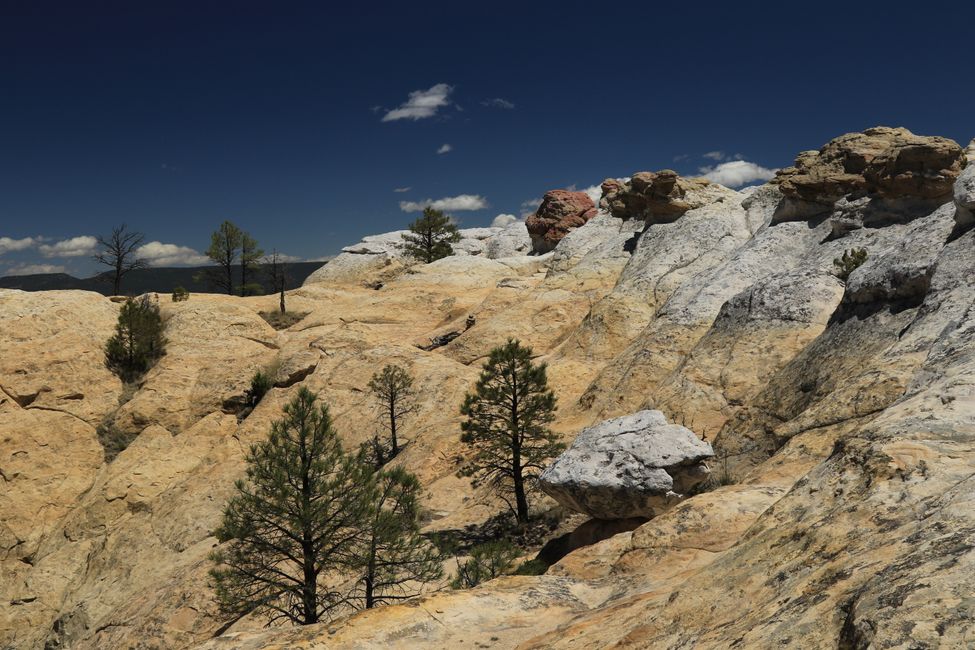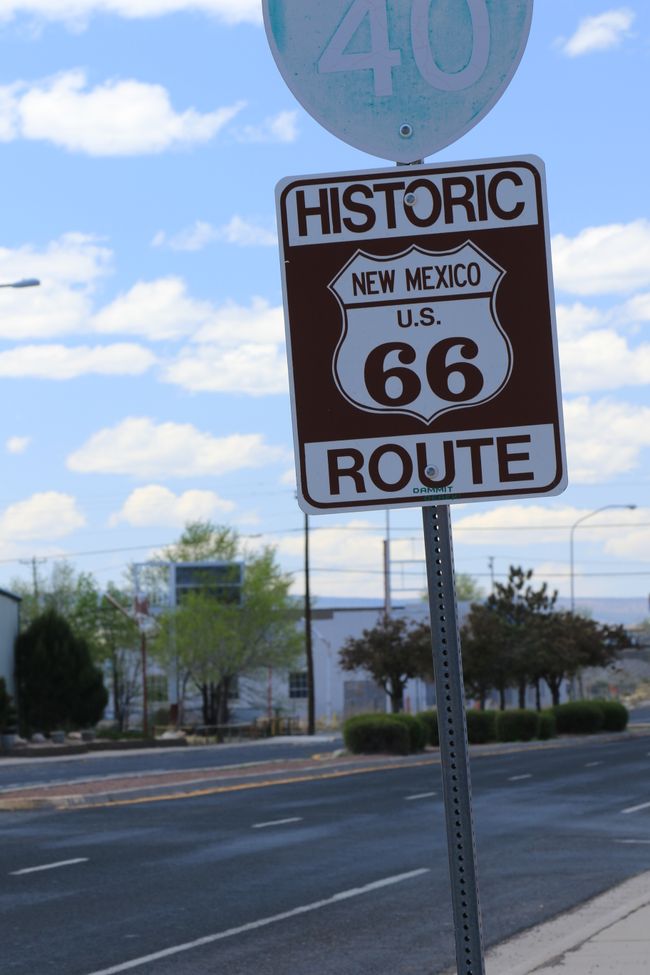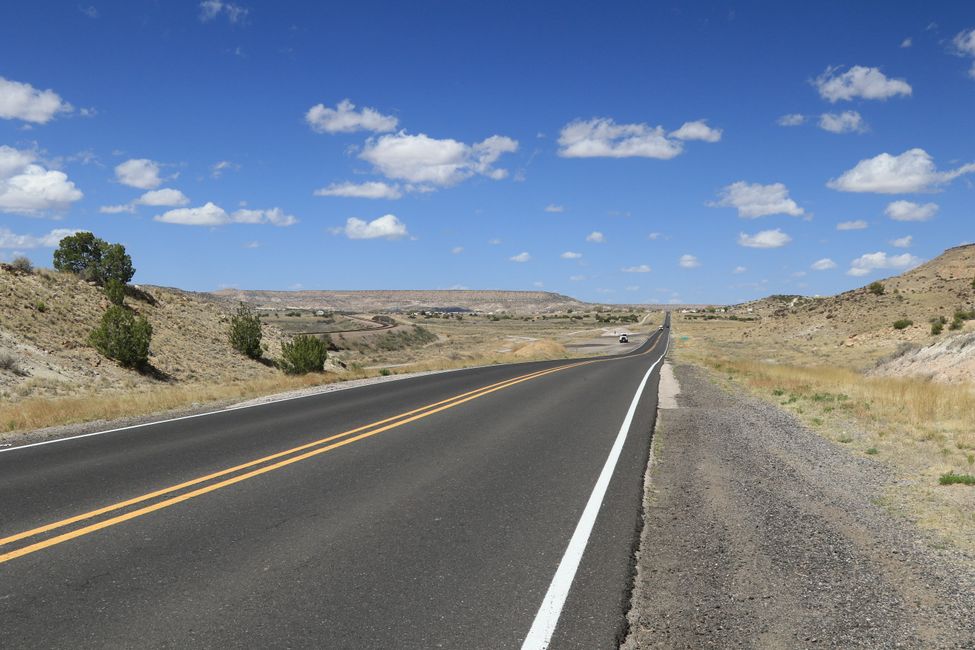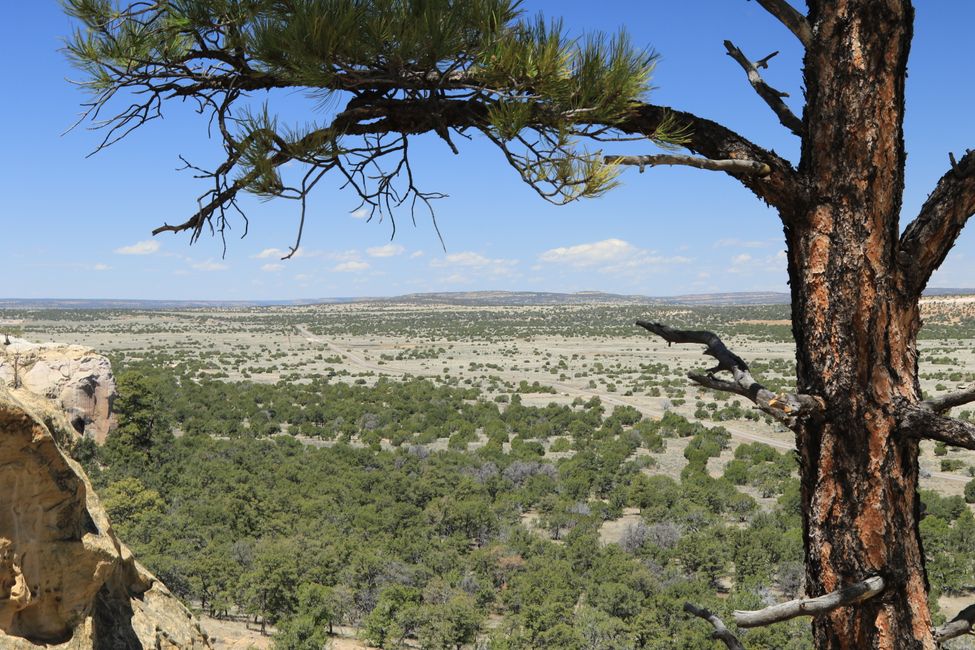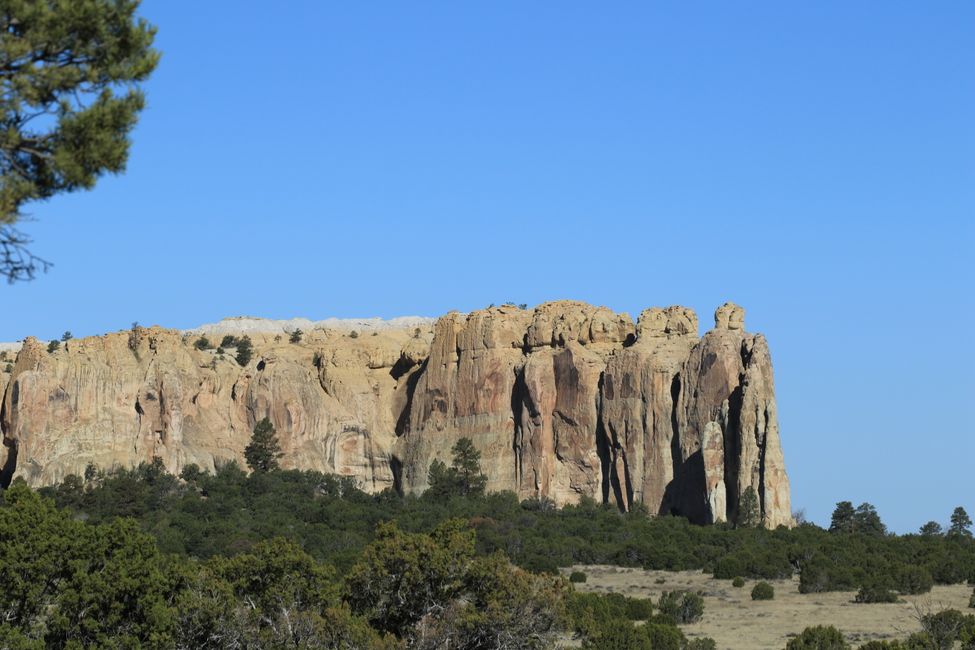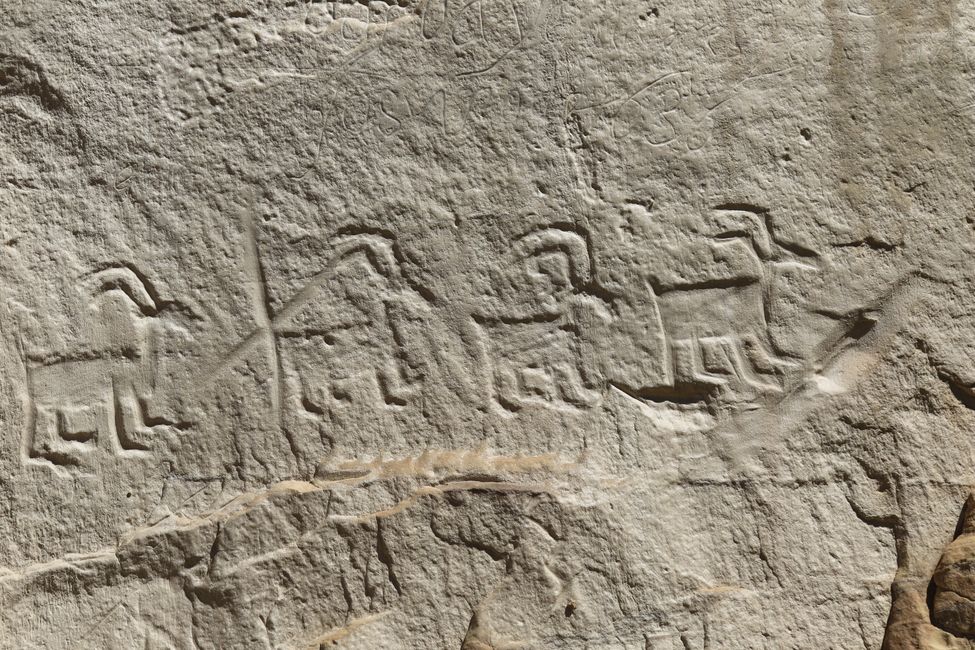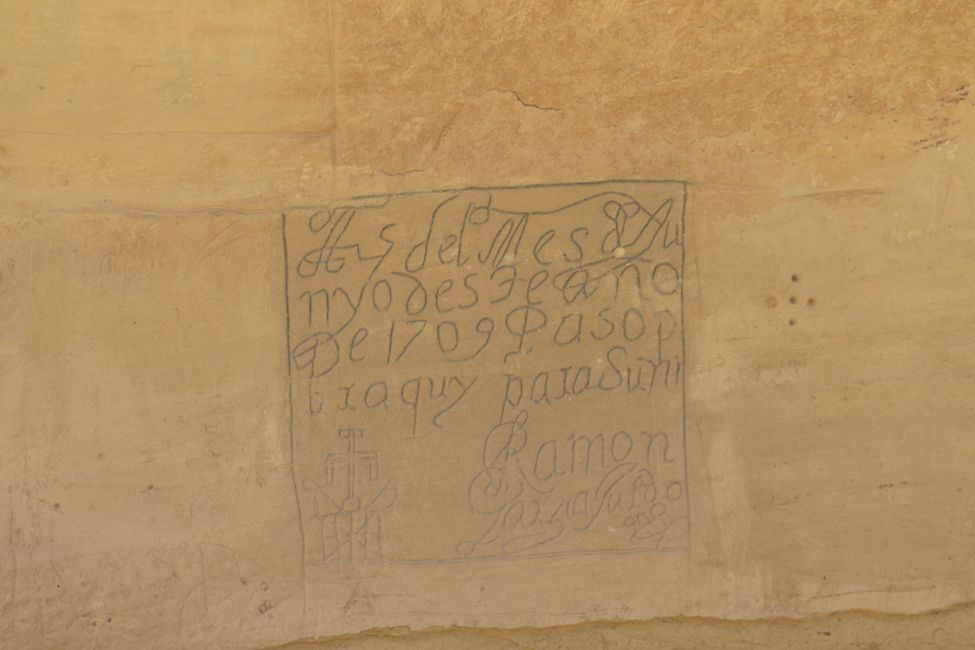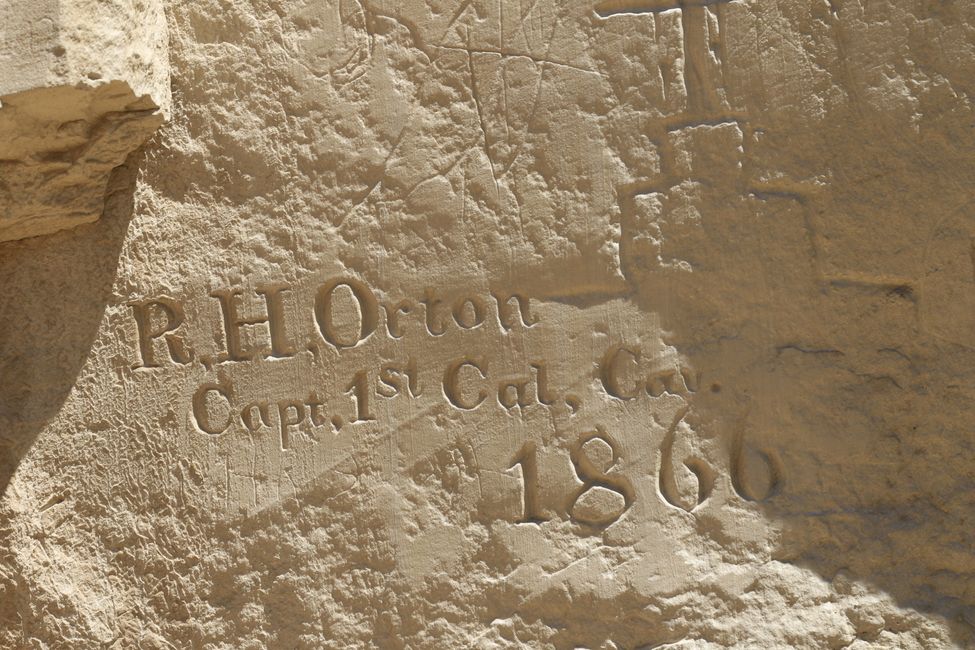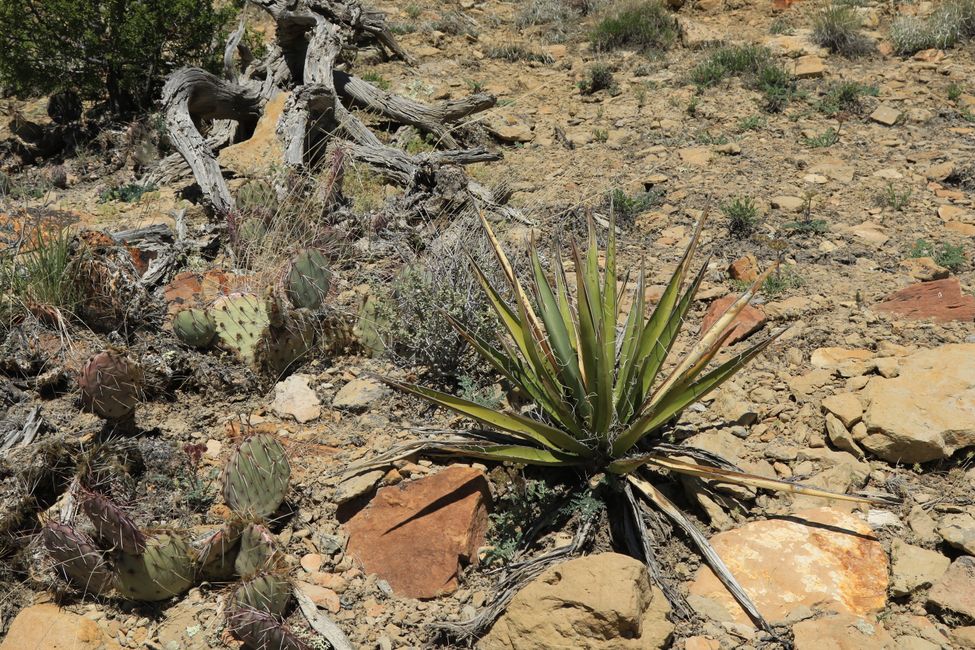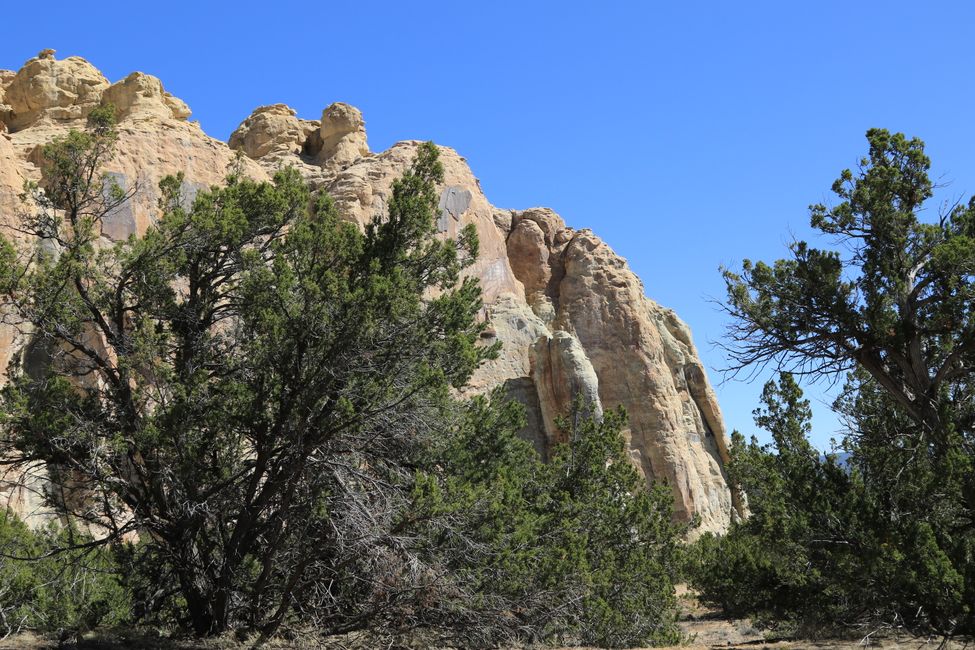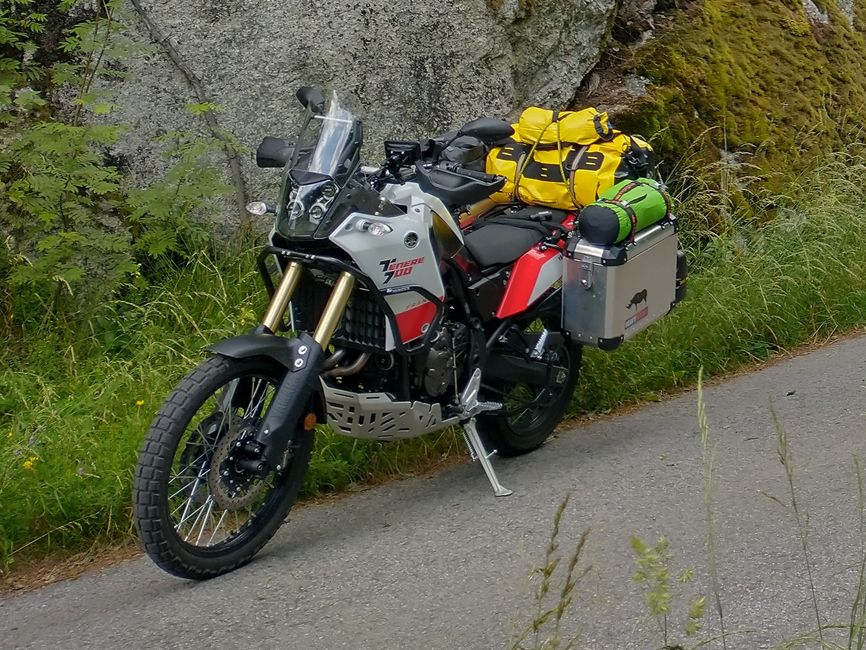
the roads behind the Red Rocks
vakantio.de/the-roads-behind-the-red-rocks
High Desert
Udgivet: 06.05.2023
Abonner på nyhedsbrev
High Desert
There are words that simply do not exist in the German language. We know the sand and the rock desert, the desert mountains, and a little bit more, but a high desert - that is foreign to us.
To get to such a place, one must go to the west of New Mexico, and in doing so, one inadvertently ends up on a remaining piece of the 'Old Route 66'. This is where history catches up with you, the history of the Great Depression and the devastating dust storms in the Midwest in the 1930s, which led millions, robbed of their material existence, out of sheer necessity to seek their way to the supposedly golden west. This mixture of desperation and often futile hope, of courage and sheer will to survive, has given Route 66 its myth and the dramas that played out here have been given an impressive monument in John Steinbeck's novel 'The Grapes of Wrath'.
You can't dwell on these thoughts for long, because you want to go to El Morro, and for that, you have to turn south.
From a desert plateau (about 2300m), some table mountains rise, one of which is particularly striking. And around it, much history has happened in the past. First and foremost, the Native American tribe of the Hupi lived here for centuries, who, like others in this area, built their pueblo on such a block not least for reasons of safety. They had to carry the water up when the cisterns were empty, but apparently that was worth it, especially since, invisible from below and only accessible from above, a tree-covered, shady canyon cuts through this rock; one could certainly endure it there.
And there is even a small pool with fresh spring water - and that's exactly what brought disaster to the indigenous people. First, the Spanish conquistadors took possession of the spring, and later the word quickly spread among the westward-bound settler treks that there was such a rare, reliably gushing water source in the desert.
The Indians were defenseless against firearms.
This eventful history is truly carved in stone here: carved into the soft sandstone, you can find Native American petroglyphs, brash Spanish legacies, and many names of those immigrants who, in the period after 1850, could no longer establish themselves in the already established society on the east coast and now hoped for their chance in the west of the continent.
Notes on the climate:
While writing this, the chronicler sits in a sweater and jacket, with a hat and cold fingers, at a table in a wonderful campground under a cloudless sky, hoping for the sunset because then the icy wind subsides. However, it does not get warmer - on the contrary.
No cactus is blooming, spring has not yet begun here.
Abonner på nyhedsbrev
Svar (2)
Mario
Tolle Fotos und interessante Geschichte!
Dann hoffe ich, dass dein Schlafsack schön warm ist....Sabine
Durch deine Erzählung fühlt es sich an, als würde ich mit dir dort sitzen, im eisigen Wind, in dieser eindrucksvollen Landschaft, in Gedanken der Geschichten des Ortes nachhängend…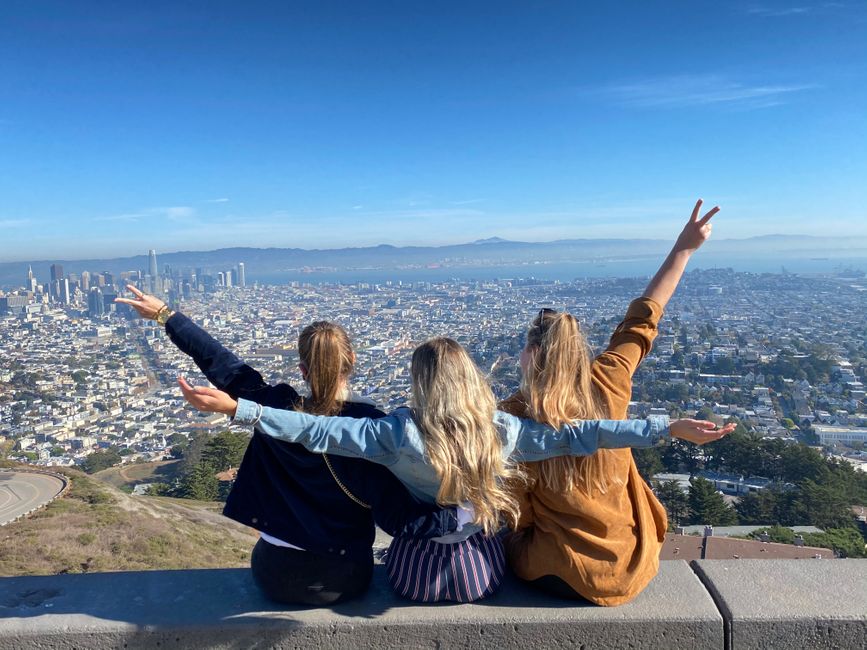
Rejserapporter USA

